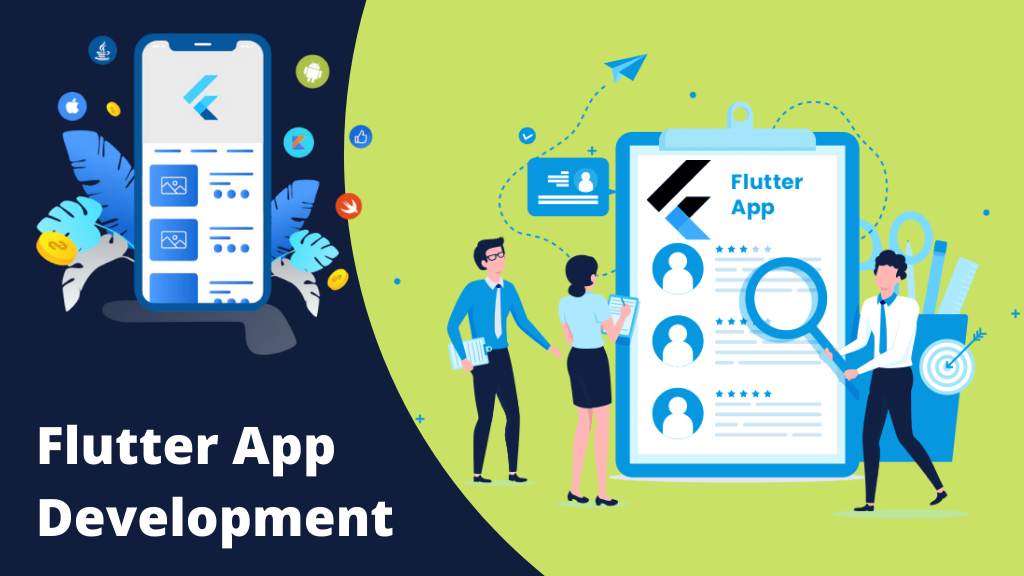Flutter Becomes the Convenient Platform for Developing Mobile Applications
Due to the fact that mobile applications have become such a vital part of our lives, the number of apps published on Android has surpassed the 100,000 mark every month mark, in addition to the more than 30,000 iOS releases. Many organizations now have the possibility to construct an application, thanks to the availability of development services for small enterprises as well as large corporations. However, an overwhelming percentage of applications continue to fail. In addition to other factors, the technology you choose to use is a critical success component. It is possible that selecting a language or framework with low performance can significantly limit your chances of success.
What is Flutter actually?
When developing mobile apps, Flutter is an open-source mobile SDK that allows developers to create native-looking Android and iOS applications from a single code base. Flutter has been around since Google unveiled it in 2015, and it was in the experimental stage until it was officially released in December 2018. Since then, the excitement around Flutter has become even more intense.
According to GitHub stars, Flutter is currently among the top 11 software repositories. Furthermore, we’ve already seen hundreds of Flutter applications being published on app stores, which is an encouraging sign.
Is a free and open-source program
- Is built on Dart, which is a quick, object-oriented programming language that is both simple to learn and maintain.
- Provide its own widgets, which are created using a high-performance rendering engine developed in-house. They are quick, attractive, and easily adaptable.
- Because of the rich widgets, Flutter applications have a nice look and feel (you can build your own original app design, but you can also utilize widely accessible UI components that adhere to the requirements of certain platforms as well).
- The design of Flutter is built on reactive programming, which is quite trendy right now (the same that React has been made from)
- It’s becoming a major challenger not just to React Native, but also to the production of native apps.
Flutter is made up of two essential components:
- Software Development Kit (SDK) is a set of tools that will assist you in the development of your software applications This contains tools for compiling your code into native machine code, as well as other utilities (code for iOS and Android).
- When you use a Framework (UI Library based on widgets), you’re basically getting a collection of reusable UI components (buttons, text inputs, sliders, and so on) that you may customize to fit your specific requirements.
Here are some crucial aspects to consider in order to help designers and developers understand the benefits of Flutter.
-
Open Source
Google’s Flutter is a software development toolkit that is available as open-source code. It allows for the quick submission of bugs and access to documentation from open developer forums on the web. It enables Flutter programmers to learn from and grow alongside the constantly shifting community of developers that actively contribute to the platform’s development and maintenance. Overall, it improves coder efficiency and productivity while also shortening the overall project’s timeliness and cost.
2. One Codebase
Because it is a cross-platform framework, it enables programmers to create code just once and have it function on numerous systems at the same time. In other words, a single version of a program may be used on both iOS and Android devices. As with native frameworks, this saves a significant amount of time and effort when building code for several platforms. As a result, there is a significant reduction in the total cost of building and deploying the software.
3. Exceptional overall performance
Flutter provides exceptional performance for two primary reasons. The first feature is that it makes use of Dart, which compiles into native code. Second, since Flutter comes with its own widgets, there is no need to use any third-party ones. It as a consequence, there is less interaction between the application and the platform. Faster app starting times and less performance concerns, in general, are made possible by these two characteristics of Flutter.
4. Popularity and engagement are increasing
Because it is an open-source framework, Flutter is loved by a large number of users who are always willing to provide a helpful hand to one another if they are in need. As a result of Google support, which includes appropriate structured documentation and a multitude of real-world implementations, the pleasant assistance of the community is just an added bonus. Google’s participation in the Flutter project also encourages the development team to maintain the framework and its widgets fresh and continually evolving, which is a genuine problem that isn’t always well addressed by older technologies.
Bottom Line
It is recommended that you use Flutter if you are a newbie mobile app programmer or if you wish to work for a Flutter mobile app development company. It is a feature-rich and future-ready integrated development environment that supports cross-platform development and allows for the simple integration of third-party components.
See Also – Top 10 Java Development Errors


